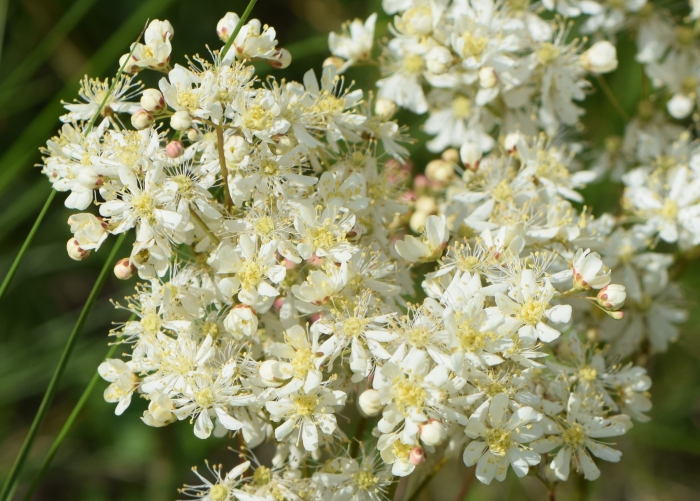Fern-Leaf Dropwort
(Filipendula vulgaris)
Fern-Leaf Dropwort (Filipendula vulgaris)
/
/

Krzysztof Ziarnek, Kenraiz
CC BY-SA 4.0






































































Estimated Native Range
Summary
Fern-Leaf Dropwort is valued for its ornamental foliage and delicate flowers, which can enhance rock gardens, borders, and wildflower meadows. It is drought-tolerant once established, making it suitable for xeriscaping and gardens with poor, dry soils. This plant is also used in traditional medicine and as a culinary herb; its tuberous roots and young leaves can be cooked or eaten raw, offering a bittersweet flavor. In cultivation, it thrives best in full sun to partial shade and adapts to a range of soil types, provided they are well-drained. Propagation is typically done by seed or division of the creeping roots. While generally low-maintenance, it can be susceptible to root rot in overly wet conditions.CC BY-SA 4.0
Plant Description
- Plant Type: Herb
- Height: 1-3 feet
- Width: 1-1.5 feet
- Growth Rate: Moderate
- Flower Color: White
- Flowering Season: Summer
- Leaf Retention: Deciduous
Growth Requirements
- Sun: Full Sun
- Water: Low, Medium
- Drainage: Slow, Medium, Fast
Common Uses
Bee Garden, Bird Garden, Butterfly Garden, Deer Resistant, Drought Tolerant, Edible*Disclaimer: Easyscape's listed plant edibility is for informational use. Always verify the safety and proper identification of any plant before consumption., Fragrant, Low Maintenance, Rabbit Resistant
Natural Habitat
Native to grasslands, meadows, and open woodlands
Other Names
Common Names: Common Queen-Of-The-Meadow, Dropwort, Knollige Spierstaude, Kleines Mädesüß, Filipendule, Filipendule Vulgaire, Knolspirea, Brudbröd, Knollen-Spierstaude
Scientific Names: , Filipendula vulgaris, Filipendula hexapetala, Spiraea filipendula, Ulmaria filipendula, Filipendula filipendula, Spiraea gigantea, Spiraea angustifolia, Spiraea filipendulina, Filipendula pubescens
GBIF Accepted Name: Filipendula vulgaris Moench